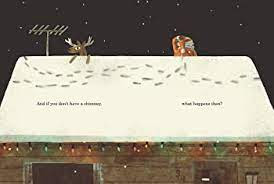"A shoebox lunch was a perfect meal
for people travelling or on a lunch break
because it was very portable and could be
eaten hot or cold. And no utensils were
required!
Because Black people were not welcome
at many places in the South for a long
time after they were freed, the shoebox
lunch made travel possible. They could
safely eat meals on the go."
We'll end the 'old' year with a book about food, and begin the 'new' tomorrow with a book about community and more food. Has food been the focus of conversation and merriment over the past ten days at your house? Do your kids ever wonder where the food they eat comes from, or how it came into being?
In this book, David Rickert writes about some of the different foods we eat from an historical perspective, and illustrates it in a graphic style sure to capture full attention from those middle graders who love to get their information in a pleasing and entertaining way. There is a lot of material here.
"Medieval Italians added toppings like mushrooms and meat or fish
to their pizzas. These early pizzas were filling meals that required
only a few ingredients.
But still not cheese and tomato sauce! Pizza as we know it today
started in Naples, Italy in the 1700s."
There is much to discover here as the author discusses the various types of pizza from different world countries, the evolution of yogurt, making fried chicken, how sandwiches came to be and what they are made of in England, Vietnam, the Middle East and the U.S. He moves seamlessly from one food to the next; the pickle is developed when a sandwich eater wanted something to go well with his meal.
Readers learn that not all pickles are made with cucumbers. World communities pickle cabbages, tomatoes, eggs, turnips, radishes, eggplants, mangos. The tone of the book is positive and friendly, offering terrific graphics, humorous asides, and useful facts about notable people associated with some of the foods presented. There is such variety in foods that have been developed throughout history and around the world. Subjects include: cereal, yogurt, waffles, pizza, fried chicken, sandwiches, pickles, sushi, salad, popcorn, cake, ice cream, and apple pie.
Pick a favorite, and take the time to learn about it before moving on to the next topic. Back matter includes a suggestion for trying to discover some history for family foods, and additional sections on becoming a food historian, drawing in creative ways, making a delicious meal (with recipes for pickles and a club sandwich accompanied by a milk shake), a list for further reading, and an index to help the reader get back to a favorite place. It's fun to read, gets the reader's attention, and offers a wealth of information for those kids always keen to learn more. Enjoy!



























































